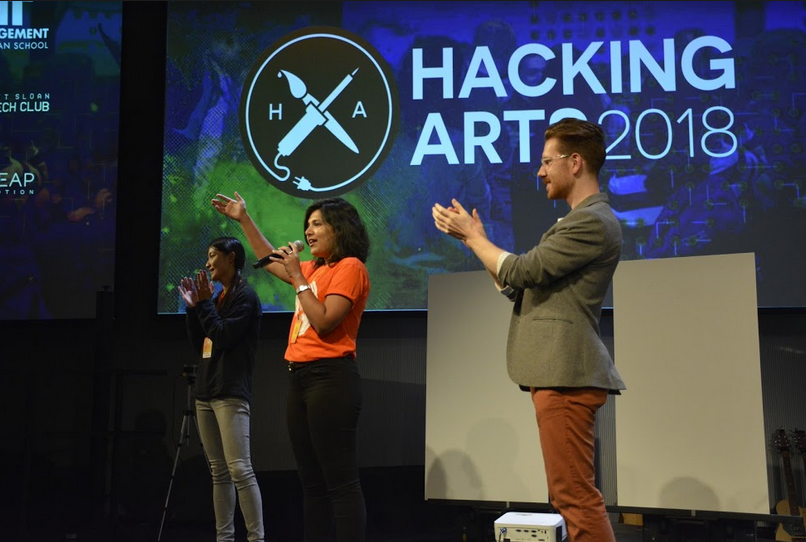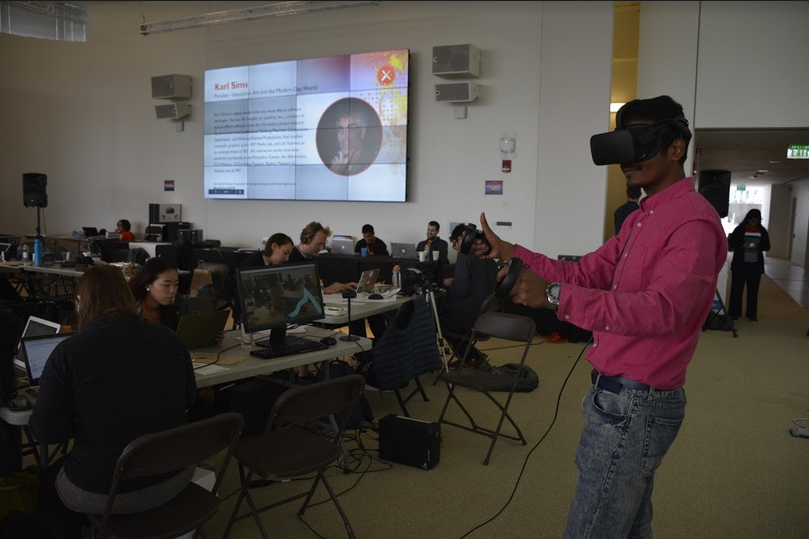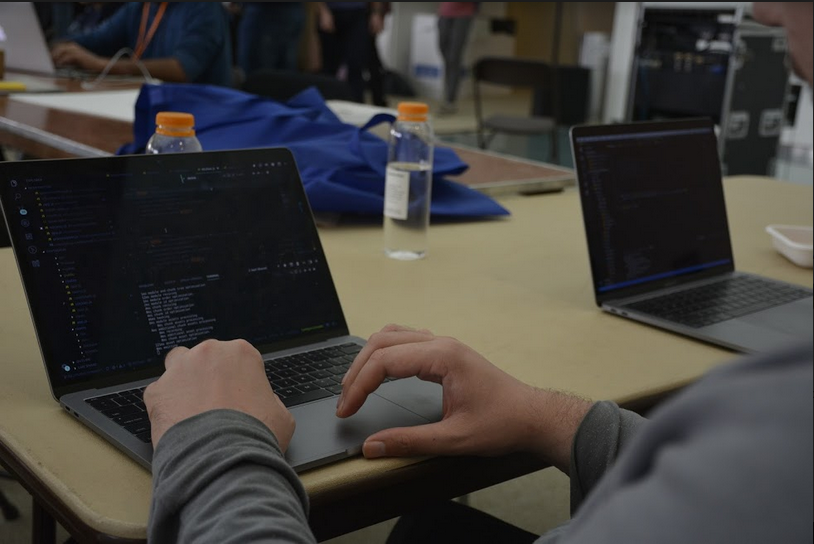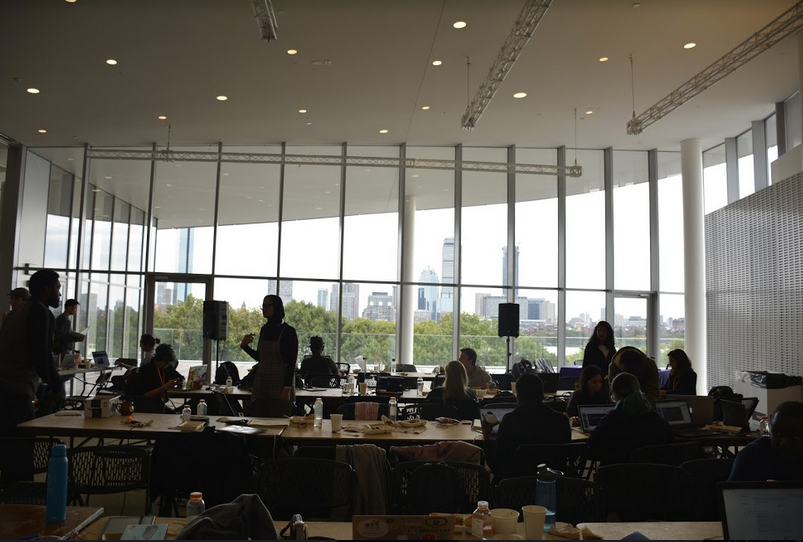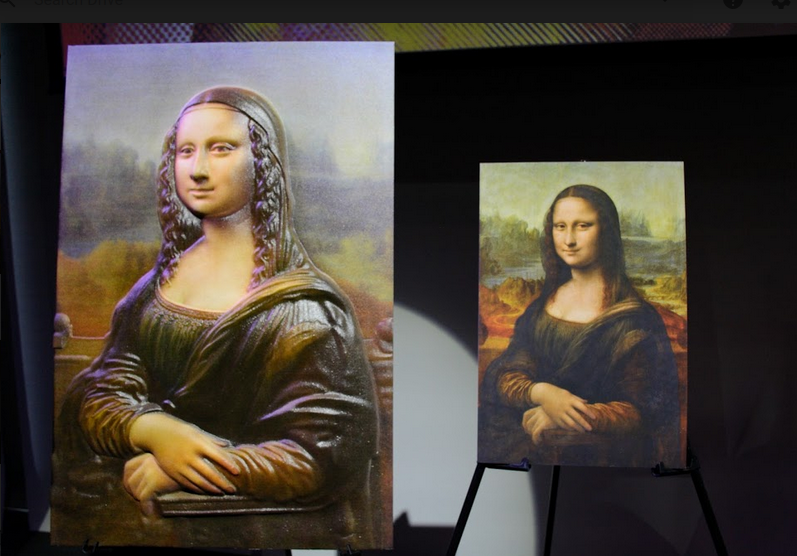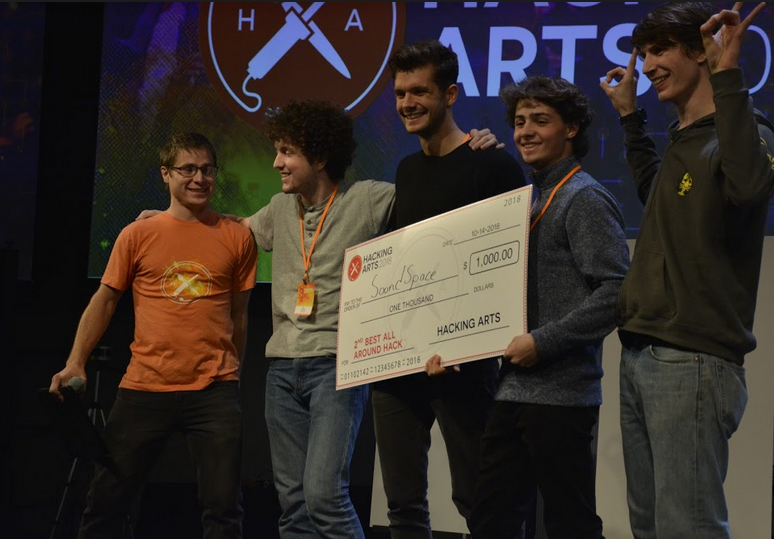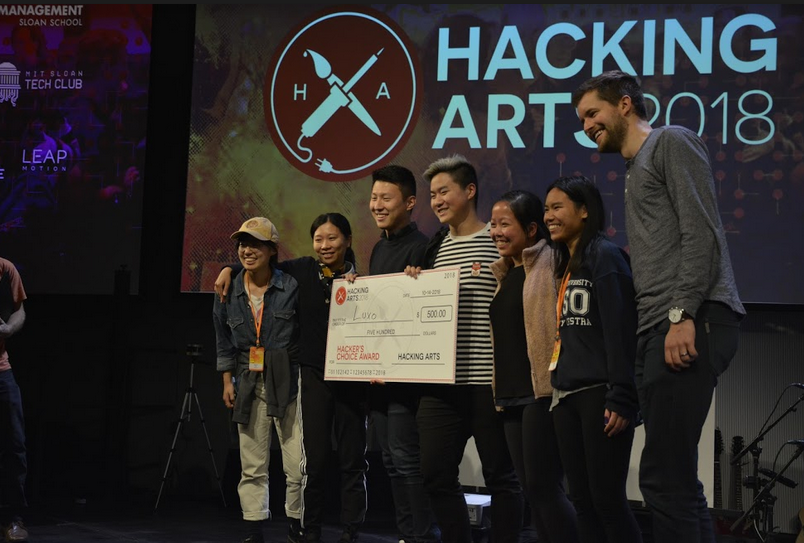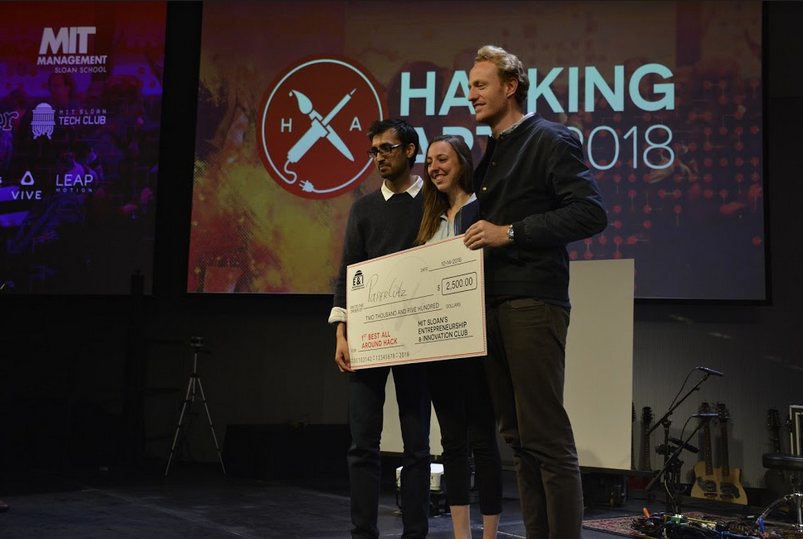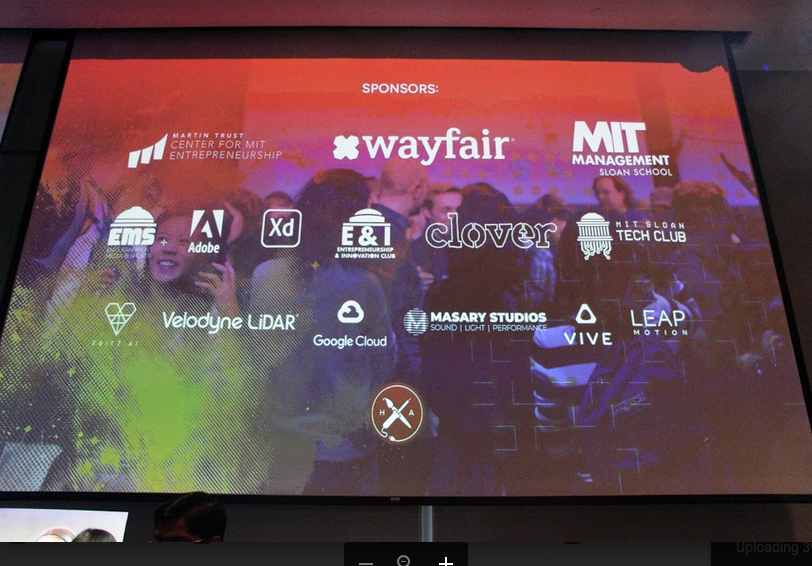Latest news about Bitcoin and all cryptocurrencies. Your daily crypto news habit.
A Spectacle of Art & Tech at MIT — Hacking Arts 2018
Written by Davinder Jangi, Edited by Philip Plotnicki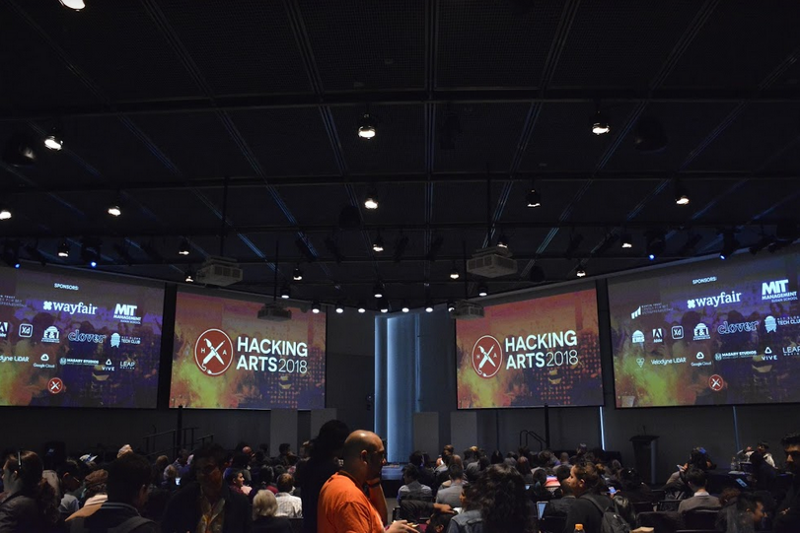 Welcoming the Best of the Best to Hacking Arts 2018
Welcoming the Best of the Best to Hacking Arts 2018
What’s the first thing that comes to mind when you hear art? It likely falls in the bucket of visual and performing arts, music or fashion: a Banksy painting (or whatever remains of it), a ballet performance or a Kendrick Lamar song.
How about art and technology?
The possibilities now skyrocket to an unfathomable degree: digital art on the blockchain, a VR light show or rap music created by DNA (See conference highlights below).
Art has the ability to empower and inspire people in powerful ways and at the very least offers an escape from the perils of everyday life. Whether you love art or think it is trivial, from a business perspective — it is a lucrative industry that is teeming with innovations because of emerging technologies. While technology intersects with everything, the intersection of technology and art isn’t often discussed to the same magnitude of technology and health care or finance. Furthermore, there are few spaces that bring technologists and artists together to explore the future of arts like Hacking Arts.
“Hacking Arts is fun that way because everyone around you is buzzing with ideas,” — Vivekh, Harvard University.
Hacking Arts Background
Hacking Arts is a 2-day festival that explores the intersection between arts and technology; it consists of a 24-Hour Hackathon, speakers, panel discussions, workshops and an Art and Tech Expo.
Ed Bilious, the Founding Director of the Center for Innovation in the Arts at the Juilliard School, opened the festival as a keynote speaker by shedding light on the importance of art and technology. He quoted Einstein, a fervent violin player, who once said: “My discovery was a result of musical perception.”
Over 200 Hackers from 22 schools across North America joined forces in a 24-hour Hackathon. The prizes worthwhile: 1st place -$2,500, 2nd place — $1,000 and $500 for the fan favourite. Each team had access to an arsenal of equipment which included V12 Velodyne LiDAR sensors, position-based sound sculpture cubes, Leap Motion controllers, HTC VIVE kits and Oculus Rift VR systems.
Ideation Phase
Hackers who formulated an idea already got on stage to pitch their ideas to attract team members. These ideas were innovative: Shazam for dance moves, an AR platform that connects artists to mentors to help them create their projects and an app where users draw art over aerial photography of cities. The excitement in the room was palpable in the room; audience members cheered when they heard an innovative idea; the Hackers listened closely to find an ideal group. After the pitches, the Hackers formed groups and they were off!
Hacking and Co-Creation
The Hackers were dispersed in their teams across a spacious, high ceilinged room in the MIT Media Lab overlooking a picturesque view of the Downtown Boston skyline-which gave them a refreshing visual contrast from their coding screens. Co-creation was the focus of the Festival as demonstrated by the diversity of each team. “We have a music tech person, we have 3 visual designers and developer in myself and it is interesting communication wise how you have to adapt your language and your ideas to make people from outside your world understand what you are trying to say and just that exercise enables a lot of fresh ideas to emerge,” said Palo who’s team’s idea enabled the audience to have a direct impact on the performance through different controllers that detect humidity temperature, breath and heart rate.
Sound
A standout aspect of Hacking Arts was the way it sounded. There were so many sounds that meshed together with the constant buzz of discussion in the room. First, a high-pitched note of a violin would enter. Then a wind-like sound, originating from a Hacker running around a LiDAR sensor, would pass. To top it off, there were live-musical performances going on throughout the festival right beside the Hackers. One of the performers was Wayup Rui, an up and coming Boston artist, who crooned and rapped over a diverse selection of beats. “I think it’s cool for everyone here to hear a different vibe than what they are used to. Music does a lot for people in general — it could get you ready for work or a basketball game- and I want to share the positive vibes,” said Rui (Follow him @wayuprui on Instagram to hear his music).
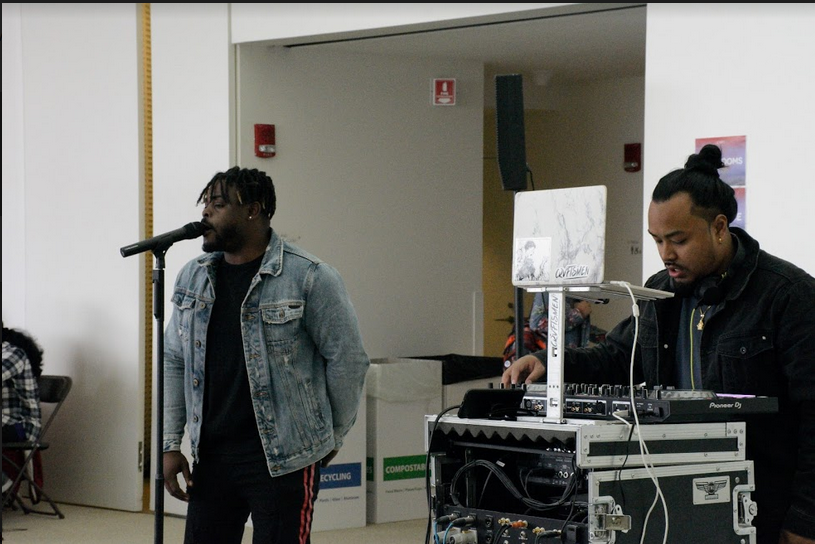
Industry Professionals
There were tons of booths set up for Hackers and festival goers to interact with like those from sponsors Google Cloud, Adobe and Wayfair. In addition, there was a wealth of networking opportunities for those interested in Arts and Technology like Yao Wang and Sherry Li who are the co-founders of ICTUS and showed me their project called “Unravelled”. It is a 360-degree ambisonic experience which feels like you are travelling through time and space while exploring one conscious and subconscious mind. “VR is the next wave of media but a lot of VR content at this time seems like it was not made the medium-which hinders the user’s experience.” This project felt seamless as I moved my head around and I could truly spend an hour watching it.
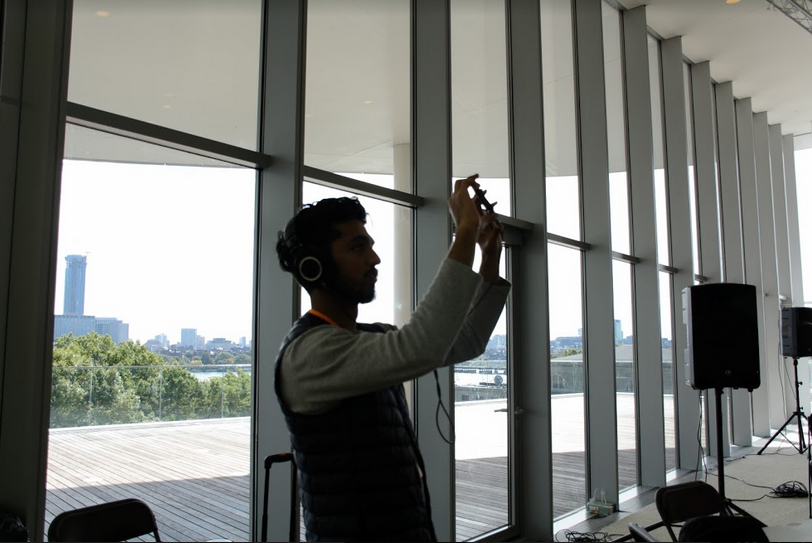
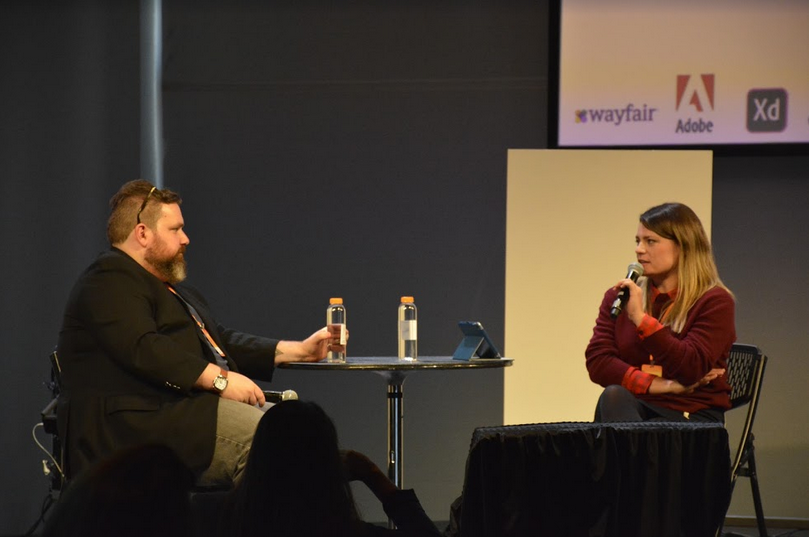
Panel Discussions
Crypto Art and Art on the Blockchain
The panellists of “Art in the Age of Blockchain” discussed the relevance of Crypto Art and how the blockchain effects players in the art ecosystem. One of the panellists was John Watkinson discussed Crypto Punks, a Crypto Art project that he co-created: a collection of 10,000 coins on the Ethereum network; each coin has a character (Picture a character from an 80’s arcade game) associated with them. Since Crypto Art is art, it has a layer of speculative value in addition to the regular value of a cryptocurrency that derives from scarcity and security. The panellists also discussed the implications that the blockchain has on the sale of digital art; the intermediaries like galleries and auctioneers have less power, and artists and sellers are empowered by a fair transaction. It is clear that the Crypto Art movement is on the rise, but all of the panellists agreed that consumers need more education about the blockchain before this industry can really take off.
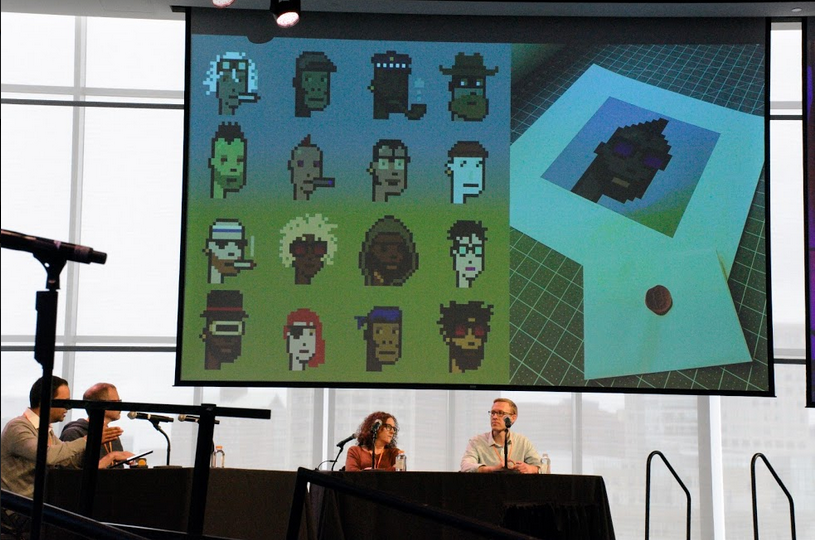
Art for Everyone
In the “Future of Creative Engagement”, discussed how technology can be used to make art more accessible for people with disabilities. Panellist John Olsen, co-founder of 3D Photoworks explained how his company makes art more accessible for the visually impaired by using Tactile Fine Art Printing to convert 2-dimensional images to a 3-dimensional, tactile fine art print. John brought a tactile fine art print of the Mona Lisa to the festival: Mona Lisa’s face feels like skin, her clothes feel like fabric, and one can tell what parts are her face as opposed to the background due to the depth and texture.
Bio Beats
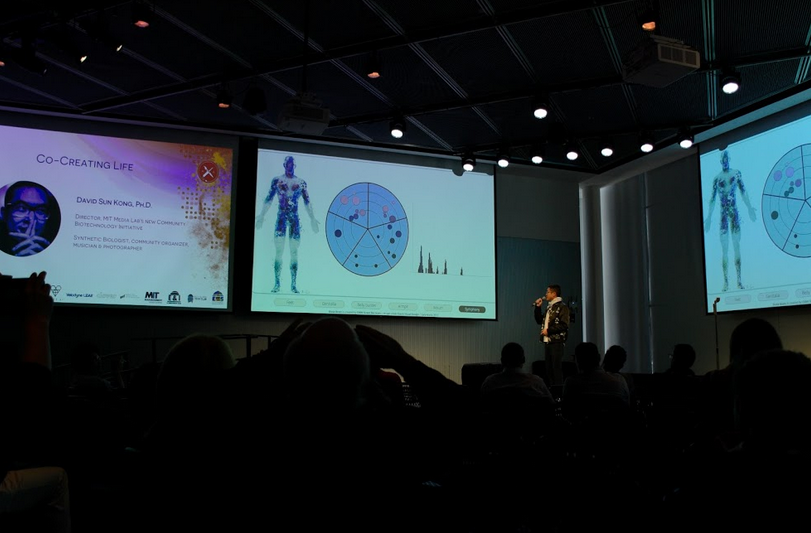
One of the most fascinating speakers was David Kong, a synthetic biologist, community organizer, musician, and photographer who works at the MIT Media Lab. He demonstrated a song that was created from a microbial record player which translated the bacteria from several human body parts and remixed them with a hip-hop beat. While I wouldn’t add it to my Spotify playlist, it is mind-boggling to know what that the bacteria on your body had a sound.
Final Presentations
After 24 hours had passed, the Hackathon concluded and the judges chose the seven finalist groups. The entire conglomerate of festival goers packed into the auditorium where the presentations were about to commence the excitement was at a fever pitch. Each of the presentations was compelling.
The fan favourite was Luxo— a VR application inspired by the Luxo Jr. lamp in Pixar films; in the experience inanimate objects like a table or a bed have life and personality-which could transform our perception of everyday space. “We learned that we could take a bunch of people with different skills with a pretty complicated vision and put them together to have a lot of fun, learn a lot and also make some pretty cool stuff,” said Geoff Winegar. His teammate Raymond Huang explained, “I learned that I should not let anxiety prevent me from giving a pitch” and Uz Zhan finished by saying “It is very powerful when you build a personal connection with something out there and people really do connect with objects that they own. “
The winning team was Paper Cuts which is a music tutorial kit where users cut out and place paper strips over a keyboard, VR technology that guides them to play a song. “It was a really cool experience, we were at Hacking Arts last year and presented and completely failed, so it was really cool to come back here and have the chance to reprove ourselves also put some work in and create something awesome as a team together,” said J Siegel from Harvard and his teammate added, “Every time I’m at MIT, we come up with really good ideas and do really good stuff here. Hacking Arts is fun that way because everyone around you is buzzing with ideas,” said Vivekh from Harvard.
A Hack of a Lifetime
In the end, the weekend for Hacking Arts 2018 was a success. Thank you to both the sponsors and partners of the event, Wayfair, MIT Management, MIT Sloan Tech Club, Center for MIT Entrepreneurship, EMS, Adobe, Xd, Entrepreneurship & Innovation Group, Clover, Leap Motion, Vive, Masary Studio, Google Cloud and Velodyne Lidar for focusing on the best of the best individuals and teams to create something unimaginable, viable, and incredible to benefit society and the different communities.
A Spectacle of Art & Tech at MIT — Hacking Arts 2018 was originally published in Hacker Noon on Medium, where people are continuing the conversation by highlighting and responding to this story.
Disclaimer
The views and opinions expressed in this article are solely those of the authors and do not reflect the views of Bitcoin Insider. Every investment and trading move involves risk - this is especially true for cryptocurrencies given their volatility. We strongly advise our readers to conduct their own research when making a decision.
